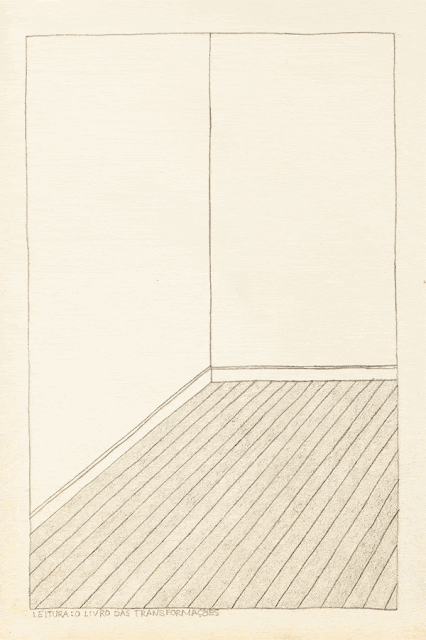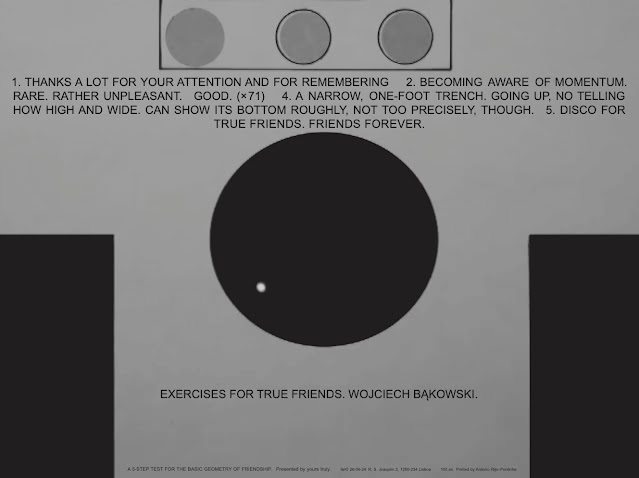Sábado, 4 de Maio de 2024
Cinema farO, porta esquerda da Igreja de Santa Isabel, Lisboa
PODES VER PODES OUVIR PODES FALAR
E se considerássemos a monocultura como resultado de uma intensa competição vegetal que leva os humanos, sob a silenciosa influência das plantas, a favorecer o desenvolvimento de certas espécies em detrimento de outras? Do ponto de vista da planta, um campo monocromático de girassóis ou papoilas não seria apenas um produto industrial, mas a expressão de uma aliança milenar em prol da luta botânica. As plantas desempenham um papel determinante no curso da história e, o que consideramos conquistas humanas, podem ser também consideradas vegetais.
A produção europeia de Dianthus caryophyllus, o cravo, teve dois picos: entre Março e Outubro de 1917 e entre Abril de 1974 e Novembro de 1975 – é curioso que este crescimento coincida com as revoluções russa e portuguesa, que usam ambas a flor vermelha como símbolo.
Em Portugal, diz-se que o cravo apareceu espontaneamente no dia 25 de Abril no snack-bar do Franjinhas, o edifício projectado pelo arquitecto anti-fascista Nuno Teotónio Pereira. Notícias de uma revolta fecharam o estabelecimento da moda, impossibilitando a celebração do seu primeiro aniversário. As flores que nesse dia eram destinadas a clientes especiais foram arrancadas das jarras pelos funcionários e enfiadas no cano das espingardas dos soldados que iam tomando as ruas. Os cravos aliaram-se assim ao movimento dos que lutavam pelo fim da guerra colonial e da ditadura.
Não foi esta a primeira vez que a flor surgiu em Portugal em apoio ao movimento antifascista. Também em 68, no Maio da sua floração, a Europa sentiu um aumento da produção de cravos, acompanhada de manifestações estudantis em Paris. A flor, embora não tenha sido adoptada como símbolo pelos franceses, veio a florescer em Lisboa nesse mês.
Em abril de 1968, um grupo de amigos viajava de Mini pela Europa quando o choque da morte de Martin Luther King Jr. os fez desviar para Paris para se juntarem a uma homenagem. Assassinar um vencedor do Nobel da Paz. PORQUÊ? Indignados, Maria Antónia Pacheco, Joaquim Osório e os irmãos Moita, Manuel e Maria da Conceição, de volta a Lisboa, pediram ao pároco progressista de Santa Isabel para replicar o tributo sob o protectorado da igreja. Organizaram um colóquio com a projeção do filme “A Marcha” de James Blue que imortalizou o sonho de Luther King. No folheto do evento pediam aos que viessem que trouxessem consigo uma flor porque “POR CADA FLOR ESTRANGULADA MILHÕES DE SEMENTES A FLORIR”, uma tirada pré-maoista de um poema de João Apolinário, escrito no início dos anos cinquenta numa cela em Peniche.
A 4 de maio, uma multidão concentrou-se no largo da igreja para assistir ao filme de flor ao peito. Mas as portas do cinema paroquial não chegaram a abrir. Coagido pela Polícia Internacional e de Defesa do Estado (PIDE), o Padre Armindo Duarte pediu às pessoas que se dispersassem. Proibir o colóquio quando este filme era apresentado regularmente em escolas e catequeses? PORQUÊ?
Indiferente, a polícia cercou e esmagou indiscriminadamente flores e pessoas. Este incidente foi mais uma faísca para a revolta que levou activistas democratas católicos e não católicos à desobediência civil e a acções não-violentas de protesto, como a vigília na Capela do Rato ou o ciclo de conferências “Lusitânia, Quo Vadis?”, fundamentais para a queda do regime.
Este sábado, novamente 4 de maio, 56 anos depois à mesma hora, tentamos uma vez mais exibir “A Marcha” no cinema da igreja de Santa Isabel, sede do farO e sob o signo da flor, vamos VER, OUVIR e FALAR em liberdade. No ano do jubileu da Revolução dos Cravos – marcado pelo avanço da extrema direita, dos regimes totalitários e pelo terror das bombas – a verdade, a justiça e a liberdade continuam a ser valores definitiva e irremediavelmente subversivos. PORQUÊ? Partilhamos do credo que a verdade desarmada terá a última palavra sobre a realidade (Martin Luther King Jr., do seu obituário, 1968).
+++++++++++
WHY?
Saturday, May 4th, 2024
Cinema farO, left door of Santa Isabel church, Lisboa
YOU CAN WATCH YOU CAN LISTEN YOU CAN TALK
What if we were to consider monoculture the result of an intense plant competition that leads humans, under silent vegetable influence, to favor the development of certain species over others? From the plant’s point of view, a monochromatic field of sunflowers or poppies would not only be an industrial product, but the expression of a millennia-old alliance in service of the botanical struggle. Plants play a determinant role in the course of history and human feats could as well be seen as vegetable triumphs.
The European production of Dianthus caryophyllus, the carnation, had two peaks: between March and October 1917, and between April 1974 and November 1975 – it is curious that this growth would coincide with the Russian and Portuguese revolutions, both of which wear the red flower as a symbol.
In Portugal, it is said that the carnation appeared spontaneously on April 25th at a snack bar in Franjinhas, the building designed by the anti-fascist architect Nuno Teotónio Pereira. Word of a revolt shut the establishment, preventing the celebration of its first anniversary. The flowers intended that day for special customers were pulled from the jars by the staff and stuck in the barrels of the soldiers who took to the streets. The carnations joined battle with those who fought for the end of colonial war and dictatorship.
This was not the first time the flower sprung in Portugal in support of the anti-fascist movement. Also in 68, in the May of its florescence, Europe experienced an increase in the production of carnations, accompanied by student demonstrations in Paris. The flower, although not adopted as a symbol by the French, bloomed in Lisbon later that month.
In April 1968, a group of Portuguese friends was traveling through Europe by Mini when the shock of the death of Martin Luther King Jr. made them turn to Paris to join a tribute. To murder a Nobel Peace Prize winner. WHY? Outraged, Maria Antónia Pacheco, Joaquim Osório, and the Moita siblings, Manuel and Maria da Conceição, back in Lisbon, asked the progressive priest of the parish of Santa Isabel to replicate the tribute under the Church’s protection. They organized a conference with the screening of James Blue’s film “The March” that immortalized Luther King’s dream. In the flyer of the event, they asked those who came to bring a flower because “FOR EVERY CRUSHED FLOWER, MILLIONS OF SEEDS WILL BLOOM,” a pre-Maoist line from a poem by João Apolinário, written in the early 1950s in a cell in the jail of Peniche.
On May 4th, a crowd gathered in the church square to watch the film with a flower on their chests. The doors of the parish cinema never opened. Coerced by the International and State Defense Police (PIDE), Father Armindo Duarte, in his liturgical gown, politely asked people to disperse. WHY? Repress this gathering when the film was regularly shown in primary and Sunday schools. Indifferent, the police surrounded and crushed flowers and people alike. This incident was another spark for revolt, engaging Catholic and non-Catholic democratic activists in actions of non-violent protest and civil disobedience, such as the wake in Capela do Rato or the cycle of conferences “Lusitânia, Quo Vadis?”, fundamental for the downfall of the regime.
This Saturday, May 4th, 56 years later at the same time, we attempt once again to show “The March” in the cinema of Santa Isabel church, farO’s headquarters, to WATCH, LISTEN and SPEAK in freedom, under the sign of the flower. In the jubilee of the Carnation Revolution – marked by the advance of the far right, totalitarian regimes and by the terror of falling bombs – truth, justice and freedom are definitively and inevitably subversive values. WHY? We commune on the credo that unarmed truth will have the final word on reality (Martin Luther King Jr., from his obituary, 1968).









